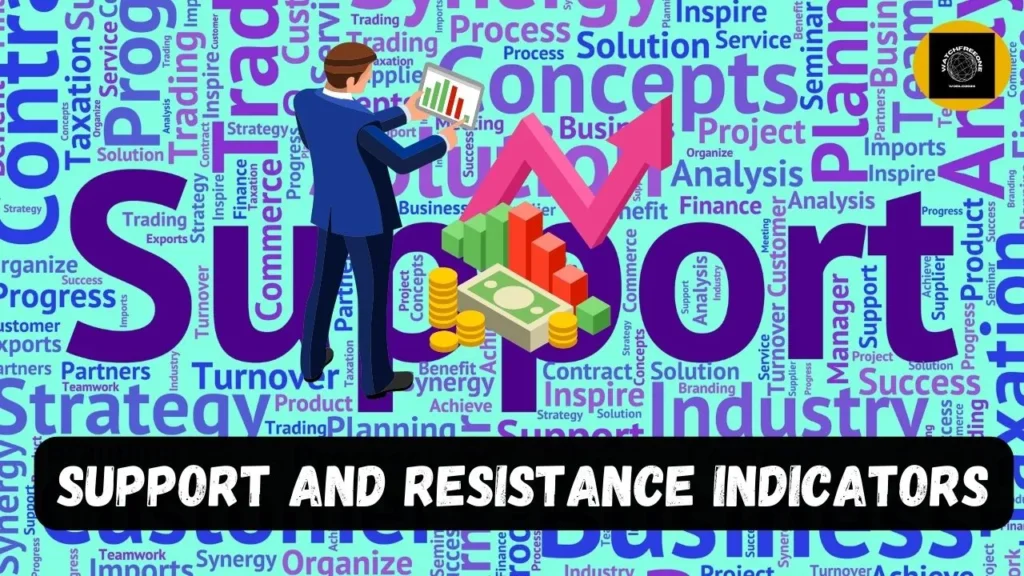Top 20 Trading Indicators: A Professional Guide
Top 20 Trading Indicators: A Professional Guide
If you are interested in trading, you must have heard of trading indicators. Trading indicators are mathematical calculations that are based on the price and/or volume of a security. These indicators are used to analyze the market and to identify potential trading opportunities. There are many trading indicators available, and choosing the right ones can be challenging. In this article, we will discuss the top 20 trading indicators that you can use to improve your trading strategy.
Technical analysis is an important aspect of trading, and trading indicators play a crucial role in it. Technical analysis is the study of historical prices and volumes of a security to identify patterns and trends. Trading indicators are used to analyze these patterns and trends and to predict future price movements. By using trading indicators, you can identify potential entry and exit points for your trades. Trading indicators can also help you to manage your risk by setting stop-loss orders and take-profit orders.
Trend Indicators
When it comes to technical analysis, trend indicators are some of the most commonly used tools. These indicators help traders identify the direction of the market and determine whether it’s a good time to buy or sell. In this section, we’ll cover some of the most popular trend indicators.
Moving Averages

Moving averages are one of the simplest and most widely used trend indicators. They are calculated by taking the average price of an asset over a specified period of time. Traders often use two moving averages, one short-term and one long-term, to identify the direction of the trend. When the short-term moving average crosses above the long-term moving average, it’s a bullish signal, and when the short-term moving average crosses below the long-term moving average, it’s a bearish signal.
MACD (Moving Average Convergence Divergence)
The MACD is a popular trend-following indicator that uses moving averages to identify changes in momentum. It consists of two lines, the MACD line and the signal line. When the MACD line crosses above the signal line, it’s a bullish signal, and when the MACD line crosses below the signal line, it’s a bearish signal. Traders also look for divergences between the MACD and the price of the asset, which can signal a potential reversal.
Parabolic SAR
The Parabolic SAR (Stop and Reverse) is a trend-following indicator that helps traders identify the direction of the trend and potential reversal points. It consists of dots that appear above or below the price of the asset, depending on whether the trend is bullish or bearish. When the price is above the dots, it’s a bullish signal, and when the price is below the dots, it’s a bearish signal. Traders often use the Parabolic SAR in conjunction with other trend indicators to confirm signals.
ADX (Average Directional Index)
The ADX is a trend strength indicator that helps traders determine whether the trend is strong or weak. It consists of a single line that ranges from 0 to 100. When the ADX is above 25, it’s a signal that the trend is strong. When the ADX is below 25, it’s a signal that the trend is weak. Traders often use the ADX in conjunction with other trend indicators to confirm signals.
Overall, trend indicators are an important part of any trader’s toolkit. They help identify the direction of the market and potential reversal points, which can be used to make informed trading decisions. By using a combination of trend indicators, traders can improve their chances of success.
Momentum Indicators
Momentum indicators are among the most popular technical analysis tools used by traders to identify the strength of a trend and its potential to continue or reverse. Here are some of the most widely used momentum indicators:
RSI (Relative Strength Index)
The RSI is a momentum oscillator that measures the magnitude of recent price changes to evaluate overbought or oversold conditions in an asset. It ranges from 0 to 100, with readings above 70 indicating overbought conditions and below 30 indicating oversold conditions. The RSI is a versatile indicator that can be used to identify divergences, trend reversals, and potential entry and exit points.
Stochastic Oscillator
The stochastic oscillator is another momentum oscillator that measures the location of the current closing price relative to the high-low range over a specified period. It ranges from 0 to 100, with readings above 80 indicating overbought conditions and below 20 indicating oversold conditions. Traders use the stochastic oscillator to identify potential trend reversals and confirm a trend’s strength.
CCI (Commodity Channel Index)
The CCI is a versatile momentum indicator that can be used to identify overbought or oversold conditions, trend reversals, and potential entry and exit points. It measures the difference between an asset’s current price and its moving average relative to its normal fluctuations. Readings above 100 indicate overbought conditions, while readings below -100 indicate oversold conditions.
ROC (Rate of Change)
The ROC is a simple momentum indicator that measures the percentage change in an asset’s price over a specified period. It can be used to identify overbought or oversold conditions, trend reversals, and potential entry and exit points. Positive readings indicate upward momentum, while negative readings indicate downward momentum.
In conclusion, momentum indicators are essential tools for traders to evaluate the strength of a trend and identify potential entry and exit points. However, it is important to use them in combination with other technical analysis tools and fundamental analysis to make informed trading decisions.
Volume Indicators
When it comes to trading, volume is an essential component to consider. Volume indicators help traders assess the trading activity or volume of a financial instrument, such as stocks, futures, or forex. This section will cover some of the most popular volume indicators that traders use to make informed trading decisions.
OBV (On-Balance Volume)
On-Balance Volume (OBV) is a volume indicator that sums volume on up days and subtracts volume on down days. By doing this, the indicator shows the general direction of the stock based on the conviction behind each day’s price action. OBV is a great tool for identifying bullish or bearish divergence between the price and the volume.
Accumulation/Distribution Line
The Accumulation/Distribution Line is a volume-based indicator that measures buying and selling pressure. The indicator uses the close price, high price, and low price to calculate the volume-weighted average price (VWAP) of the trading period. The indicator then multiplies the VWAP by the volume to calculate the money flow. The Accumulation/Distribution Line is a great tool for identifying divergences between the price and the volume. Here is an article that covers the Accumulation/Distribution Line in more detail.
VWAP (Volume Weighted Average Price)
The Volume Weighted Average Price (VWAP) is a volume-based indicator that calculates the average price of a financial instrument based on the volume traded at each price level. VWAP is often used by institutional traders to assess the true value of a financial instrument and to execute large orders without impacting the market price. VWAP is also a great tool for identifying support and resistance levels. Here is an article that covers the 5 best volume indicators on TradingView for day trading, including VWAP.
Chaikin Money Flow
The Chaikin Money Flow is a volume-based indicator that measures the accumulation and distribution of money in a financial instrument. The indicator uses the close price, high price, low price, and volume to calculate the money flow multiplier. The indicator then multiplies the money flow multiplier by the volume to calculate the money flow volume. The Chaikin Money Flow is a great tool for identifying bullish or bearish divergences between the price and the volume.
That covers some of the most popular volume indicators used by traders. Use these indicators to make informed trading decisions based on the volume activity of the financial instrument you are trading.
Volatility Indicators
When it comes to trading, volatility indicators are essential in measuring the level of price fluctuations in the market. They help traders to identify the strength of the trend, potential breakouts, and periods of consolidation. In this section, we will discuss some of the popular volatility indicators that you can use to make informed trading decisions.
Bollinger Bands
Bollinger Bands are one of the most popular volatility indicators used by traders. They consist of three lines that are plotted based on the standard deviation of the price from a moving average. The middle line represents the moving average, while the upper and lower bands represent the standard deviation of the price. When the price moves towards the upper band, it indicates that the market is overbought, and when it moves towards the lower band, it indicates that the market is oversold.
ATR (Average True Range)
Average True Range is another popular volatility indicator that measures the average range of price movement in a given period. It is calculated by taking the average of the true range, which is the highest of the following: the difference between the current high and low, the absolute value of the difference between the current high and the previous close, or the absolute value of the difference between the current low and the previous close. Traders use ATR to determine the volatility of the market and to set stop-loss orders.
Keltner Channels
Keltner Channels are similar to Bollinger Bands, but they use the average true range instead of the standard deviation to plot the upper and lower bands. The middle line is still a moving average, but it is usually set at a longer period than Bollinger Bands. Keltner Channels are useful in identifying breakouts and trend reversals.
Donchian Channels
Donchian Channels are another volatility indicator that is used to measure the high and low of the market over a given period. They consist of three lines: the upper band, the lower band, and the middle line, which represents the average of the upper and lower bands. Traders use Donchian Channels to identify the strength of the trend and to determine entry and exit points.
In summary, volatility indicators are essential tools for traders to measure the level of price fluctuations in the market. Bollinger Bands, ATR, Keltner Channels, and Donchian Channels are some of the popular volatility indicators that you can use to make informed trading decisions.
Support and Resistance Indicators
Support and resistance levels are essential for traders, as they help identify potential turning points in the market. There are several indicators that traders use to identify support and resistance levels. In this section, we will discuss some of the most popular support and resistance indicators.

Fibonacci Retracement
Fibonacci retracement levels are based on the Fibonacci sequence, which is a mathematical sequence that occurs in nature. These levels are calculated by taking the high and low points of a trend and dividing the vertical distance by the key Fibonacci ratios of 23.6%, 38.2%, 50%, 61.8%, and 100%. The resulting levels are potential support and resistance levels.
Pivot Points
Pivot points are calculated based on the previous day’s high, low, and close prices. These levels are used to identify potential support and resistance levels. Traders use pivot points to identify key levels to enter and exit trades.
Price Channels
Price channels are used to identify potential support and resistance levels based on the highs and lows of a trend. These channels are drawn by connecting the highs and lows of a trend. The resulting channel can be used to identify potential support and resistance levels.
Standard Deviation
Standard deviation is a statistical measure that is used to measure the volatility of a security. Traders use standard deviation to identify potential support and resistance levels. The standard deviation levels can be used to identify potential turning points in the market.
In conclusion, these are some of the most popular support and resistance indicators used by traders. Each indicator has its strengths and weaknesses, and traders should choose the indicator that works best for their trading style.
Market Sentiment Indicators
Market sentiment indicators are useful tools for traders to gauge the overall market sentiment and make informed trading decisions. These indicators measure the mood or attitude of investors towards the market, and can help traders identify potential buying or selling opportunities.
Sentiment Indicators
One popular type of market sentiment indicator is the sentiment index, which measures the percentage of bullish or bearish investors in the market. The sentiment index is calculated by dividing the number of bullish investors by the total number of investors in the market. A high sentiment index reading indicates that the majority of investors are bullish, while a low reading indicates that the majority of investors are bearish.
VIX (Volatility Index)
The Volatility Index, or VIX, is another popular market sentiment indicator. The VIX measures the level of fear or uncertainty in the market by tracking the implied volatility of S&P 500 index options. A high VIX reading indicates that investors are fearful and uncertain about the market, while a low reading indicates that investors are confident and optimistic.
Put/Call Ratio
The Put/Call Ratio is another market sentiment indicator that measures the ratio of put options to call options traded on the market. A high put/call ratio indicates that investors are bearish, while a low put/call ratio indicates that investors are bullish. The Put/Call Ratio can be used as a contrarian indicator, as extreme readings can signal a potential reversal in the market.
Bull/Bear Ratio
The Bull/Bear Ratio is a market sentiment indicator that measures the ratio of bullish investors to bearish investors in the market. A high Bull/Bear Ratio indicates that the majority of investors are bullish, while a low ratio indicates that the majority of investors are bearish. The Bull/Bear Ratio can be used to identify potential buying or selling opportunities, as extreme readings can signal a potential reversal in the market.
Overall, market sentiment indicators are useful tools for traders to gauge the overall mood of investors towards the market. By using these indicators, traders can make informed trading decisions and potentially profit from changes in market sentiment.
Economic Indicators
If you’re looking to trade in the financial markets, you need to be aware of economic indicators. These are reports that provide information about the health of an economy. They can help you make informed decisions about which assets to buy or sell.
GDP Reports
Gross Domestic Product (GDP) is the total value of goods and services produced in a country. It is one of the most important economic indicators. GDP reports are released quarterly and annually. They can give you an idea of how well the economy is doing. If the GDP is growing, it’s a sign that the economy is healthy. If it’s shrinking, it’s a sign that the economy is in trouble.
Employment Data
Employment data provides information about the number of people who are employed or unemployed in a country. This includes data on the unemployment rate, the number of jobs created, and the number of people who are looking for work. Employment data can give you an idea of how well the economy is doing. If the unemployment rate is low and the number of jobs created is high, it’s a sign that the economy is healthy.
Interest Rates
Interest rates are the cost of borrowing money. They are set by central banks and can have a big impact on the economy. If interest rates are high, it can be more expensive to borrow money. This can slow down economic growth. If interest rates are low, it can be cheaper to borrow money. This can stimulate economic growth.
Inflation Reports
The cost of goods and services is increasing at a rate known as inflation. Inflation reports provide information about how much prices are increasing. If inflation is high, it can be a sign that the economy is overheating. This can lead to higher interest rates and slower economic growth. If inflation is low, it can be a sign that the economy is sluggish. This can lead to lower interest rates and faster economic growth.
Overall, economic indicators can be a valuable tool for traders. By keeping an eye on these reports, you can make more informed decisions about which assets to buy or sell.
Frequently Asked Questions
What are the most reliable technical indicators for trading?
When it comes to trading indicators, there is no one-size-fits-all answer. The best indicators for you will depend on your trading style, goals, and risk tolerance. That being said, some of the most popular and reliable technical indicators include Moving Averages, Relative Strength Index (RSI), Bollinger Bands, and MACD. These indicators can help you identify trends, momentum, and potential buy and sell signals.
Which indicators do professional traders consider essential?
Professional traders often use a combination of technical indicators to analyze the market. Some of the most essential indicators include Moving Averages, MACD, Stochastic Oscillator, and Fibonacci retracements. These indicators can help traders identify potential buy and sell signals and determine entry and exit points.
How do leading and lagging indicators differ in trading analysis?
Leading indicators are used to predict future price movements and are based on current market trends and momentum. Examples of leading indicators include Moving Averages and Stochastic Oscillator. On the other hand, lagging indicators are based on past price movements and are used to confirm trends that have already occurred. Examples of lagging indicators include MACD and Bollinger Bands.
What are the best indicators for day trading strategies?
Day traders often use indicators that can help them identify short-term trends and potential buy and sell signals. Some of the best indicators for day trading strategies include Moving Averages, RSI, and Volume. These indicators can help traders identify potential entry and exit points and make quick decisions based on short-term market movements.
Can you combine multiple trading indicators, and if so, how?
Yes, traders can combine multiple indicators to create a more comprehensive trading strategy. However, it’s important to avoid overcomplicating your analysis with too many indicators. A good rule of thumb is to use no more than three indicators that complement each other and provide different perspectives on the market.
What are the top technical indicators used in swing trading?
Swing traders often use indicators that can help them identify medium-term trends and potential buy and sell signals. Some of the top technical indicators used in swing trading include Moving Averages, MACD, and Fibonacci retracements. These indicators can help traders identify potential entry and exit points and make informed decisions based on medium-term market movements.





